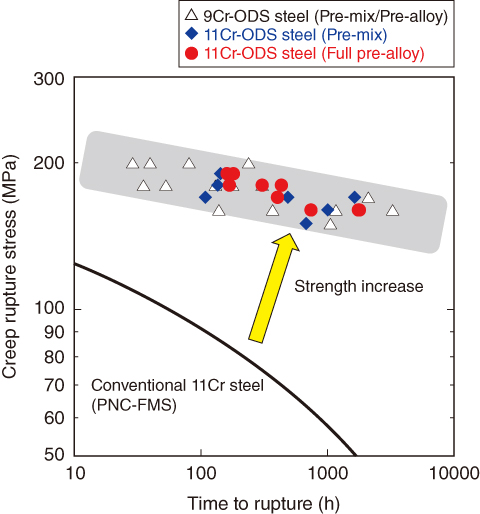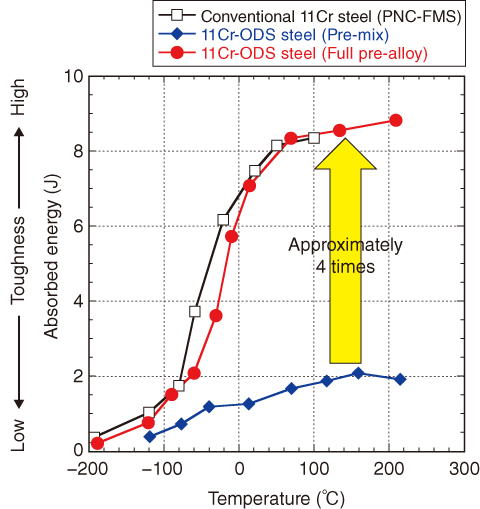
Fig.7-10 Creep strength of 9 and 11Cr-ODS steels at 700 ℃

Fig.7-11 Toughness of full pre-alloy and premix ODS steels
To make the advanced fast reactor (FR) safe and economical, it is necessary to develop fuel cladding tube with superior strength and dimensional stability, since the cladding tube will be used under severe conditions (e.g., high temperature and high-dose neutron irradiation). Hence, we have researched and developed oxide dispersion-strengthened (ODS) steel cladding tubes. 9Cr-ODS steel cladding tubes have been produced as a primary candidate, and engineering requirements for mass scale production of these tubes have been studied.
If the dissolution of cladding tubes in nitric acid increased during the spent fuel reprocessing process, the amount of high-level radioactive waste (vitrified waste) and the cost of the fuel-cycle system would both increase. Therefore, we have also developed ODS steels containing over 9wt% Cr to improve corrosion resistance in nitric acid.
High-Cr ODS steel should be granted properties equivalent to those of 9Cr-ODS steel to be satisfactory for use as a fuel cladding tube. Therefore, the matrix must be tempered martensite, as it is for 9Cr-ODS steel. We selected 11Cr for the high-Cr martensitic ODS steel, and modified the other element concentrations based on our research into the structure control (i.e., crystal structure and grain size) and strengthening mechanism. The high-temperature and long-term strength of the optimized 11Cr-ODS steels were evaluated by creep tests at 700 ℃ which is assumed to be the highest temperature that the cladding will attain during normal operation of an advanced FR. The creep strength of 11Cr-ODS steels was much better than that of conventional 11Cr heat-resistant steel (PNC-FMS), and nearly equal to that of the 9Cr-ODS steels, as shown in Fig.7-10.
In general, high strength steels tend to have low toughness, i.e., they are weak against cracks and impacts. In addition, ODS steel is subject to the influence of defects, such as inclusions (i.e., coarse oxide and nitride), that degrade its toughness. We applied a full pre-alloy metallurgy method to the production of 11Cr-ODS steels, instead of a simple pre-mix metallurgy method. The pre-alloy method can greatly decrease inclusions, leading to fracture. The toughness of the full pre-alloy ODS steel is much greater than that of pre-mix ODS steel, as shown in Fig.7-11.
We have confirmed the potential of 11Cr-ODS steel with good corrosion resistance for use as the material for the long life fuel cladding tube. In the next step, we will proceed to conduct several kinds of tests on the cladding tubes composed of full pre-alloy 11Cr-ODS steels.